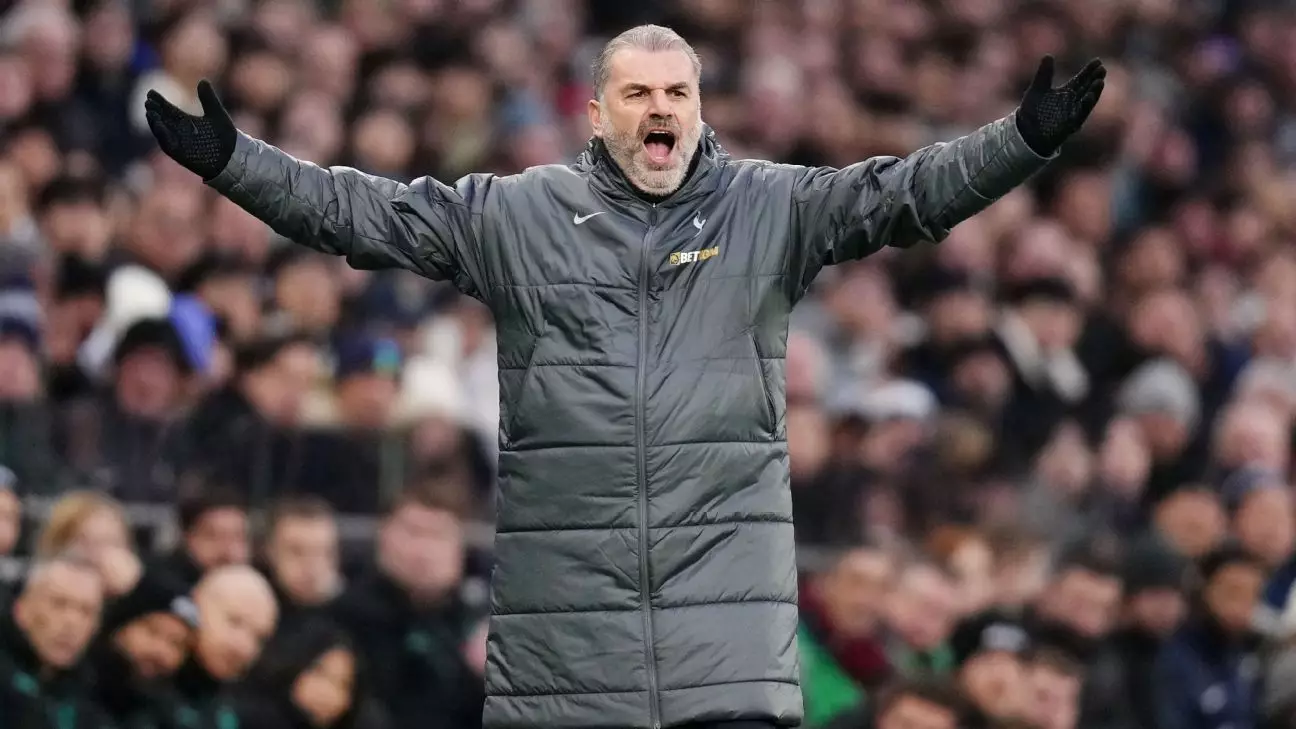Tottenham Hotspur finds itself in a precarious position due to a growing roster of injuries that have plagued the team in recent weeks. As manager Ange Postecoglou faces the repercussions of this crisis, the need for strategic decisions becomes even more critical. The circumstances came to a head during their recent match against Wolverhampton Wanderers, a game that ended in a frustrating 2-2 draw. This article not only examines the immediate challenges faced by Spurs but also delves into the broader implications of such a crisis on the team’s performance and morale.
Tottenham’s encounter with Wolverhampton was marked by a blend of resilience and missed opportunities. Despite struggling with injuries, Postecoglou had to make tough calls to field his team. Radu Dragusin, who was nursing an ankle injury, was pressed into service due to an alarming lack of available defenders. His presence on the field highlighted the depth crisis that Spurs are enduring: with key players like Cristian Romero, Micky van de Ven, and Ben Davies sidelined, the options were alarmingly few. The decision to play Dragusin was clearly a tactical compromise, as Postecoglou acknowledged the delicate nature of this judgment call.
The draw against Wolves left Spurs in an underwhelming position, sitting at 11th in the Premier League table. Their form has been a significant concern, with only one victory in their last seven league matches—a grim statistic that reflects the cumulative toll of injuries and fatigue across the squad. The early concession of a goal—now a recurring theme for Tottenham—set a negative tone but was momentarily countered by goals from Rodrigo Bentancur and Brennan Johnson that put the team ahead. Yet, the inability to maintain that lead speaks volumes about the fragility of their current state, compounded by the late equalizer from Jørgen Strand Larsen.
Postecoglou’s comments after the match indicated not just a physical crisis but also an emotional one for the squad. Injuries affect more than just individual players’ abilities to perform; they can severely impact team morale. The reliance on a core group of players, as Postecoglou noted, often results in fatigue and diminished performance. This lingering strain was evident in the match against Wolves, where the desperation for points led to urgent but ultimately futile attempts to reclaim control after going behind.
Players like Richarlison, Wilson Odobert, and Guglielmo Vicario rounding out the injury list compound the issue, diminishing any semblance of depth or rotation within the squad. Moreover, with midfielder Rodrigo Bentancur receiving a suspension due to accumulated bookings, the situation appears increasingly dire for Spurs. Missing players are not merely statistics; they represent a loss of skill sets, tactical options, and the continuity that builds team synergy.
As Spurs approach the upcoming match against Newcastle United, the need for strategic planning will be more crucial than ever. The limitations in squad depth have already curtailed rotations, leaving the team vulnerable as they simply do not have enough fit players to field a full-strength squad. For a club aiming for higher aspirations, this predicament is not just a temporary hurdle but a threat to their long-term season objectives.
At this juncture, Postecoglou needs to embrace innovative tactics that can effectively compensate for the absentees. Whether by bolstering his overall coaching strategies, shifting formations, or even leaning more into the youth setup, there must be an agile response to navigate this challenging period. Ultimately, the resilience shown by both management and players in these trying times will determine Spurs’ ability to recover and aspire for better fortunes as the season progresses.
The injury crisis at Tottenham Hotspur presents a multifaceted challenge characterized by both immediate sporting dilemmas and long-term ramifications for team cohesion and morale. As the season continues, the onus will be on Postecoglou—and the players he has available—to forge a path through this rough patch and emerge stronger on the other side.

Leave a Reply